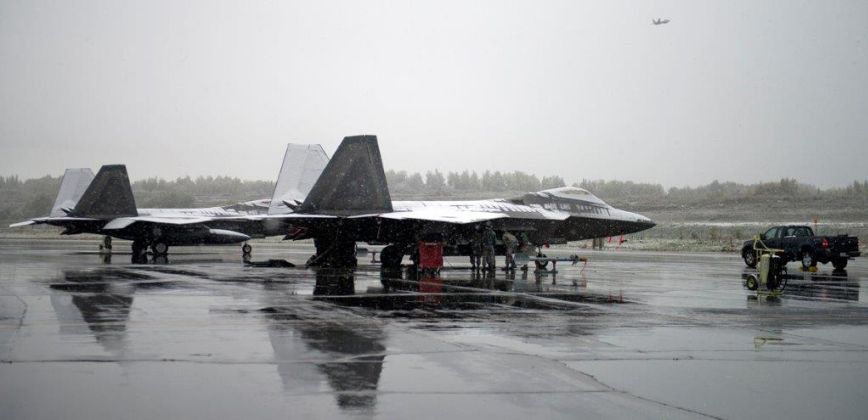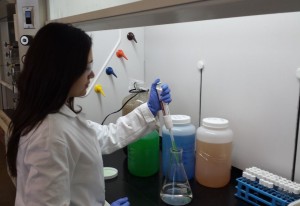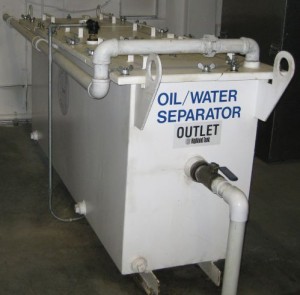
At Alaska’s Joint Base Elmendorf-Richardson disposing of leftover jet fuel, gasoline or motor oil from planes and vehicles is the easy part. The liquid wastes are dumped into one of the 120 oil/water separators situated throughout the base to be treated.
10,000 gallons
 It’s the 10,000 gallons of greasy sludge that builds up in the separators that is difficult to manage. It can’t be stored in Alaska so base personnel must package the sludge into 55-gallon drums and ship the containers to a state in the lower 48 – a time-consuming process that costs the Air Force – and taxpayers – more than $400,000 a year.
It’s the 10,000 gallons of greasy sludge that builds up in the separators that is difficult to manage. It can’t be stored in Alaska so base personnel must package the sludge into 55-gallon drums and ship the containers to a state in the lower 48 – a time-consuming process that costs the Air Force – and taxpayers – more than $400,000 a year.
Researchers at Colorado State University are helping JBER turn the problem into a positive. The team, led by the Center for the Environmental Management of Military Lands – or CEMML – , is looking at ways to recycle the sludge into a product that can be used on the base.
“We want to turn it into substance that can be used for roads or berms or something else the base needs,” said Ken Carlson, a professor in the Department of Civil and Environmental Engineering who is working on the project. “Finding a use for it would eliminate the need to package and ship it out of state and it would also save money.”
Converting sludge
 The $500,000 project got underway last fall and researchers have met with base personnel several times to examine and evaluate the oil/water separators and collect some of the sludgy build up, which Carlson’s students are analyzing.
The $500,000 project got underway last fall and researchers have met with base personnel several times to examine and evaluate the oil/water separators and collect some of the sludgy build up, which Carlson’s students are analyzing.
Over the next few months, the research team will identify not only what to convert the sludge to but the best way to do it. Their goal is to have the new system in place within the next year.
Far-reaching implications
If successful, the project could have far-reaching implications for the military, said Liz Caldwell, assistant director of the CSU-based center.
The Air For operates more than 3,200 oil/water separators at bases around the world. These units collect more than 500,000 gallons of greasy sludge each year.
Though most of the bases don’t have to package and ship sludge as far away as Elmendorf-Richardson does, the practice is still time consuming and costly, Caldwell said.
“Every Air Force base is dealing with this problem of what to do with the sludge,” she said. “A lot of them are watching this project in Alaska to see what innovative solutions we come up with because if it could also help them, they are interested in doing it. It has significant environmental benefits.”
Collaborative project
The project is new for CEMML, which has worked with U.S. military bases for years. Until now, most of the center’s projects have focused on evaluating environmental issues and recommending solutions.
Caldwell said the center teamed with Carlson and the Department of Civil and Environmental Engineering to pursue the JBER project.
“This is the first time we’ve partnered with engineering to not only identify a solution, but also design it and help oversee the installation and implementation ,” she said.
Caldwell – and CEMML – hope to pursue more projects with Carlson and the College of Engineering in the future. They are already working with the Air Force about how to treat the gallons of waste left over from de-icing its equipment.
For Carlson, the collaborations give his students experience working on real-world problems.
“They get to take what they learn in the classroom and apply it into the field,” he said. “This is a great opportunity for all of us.”